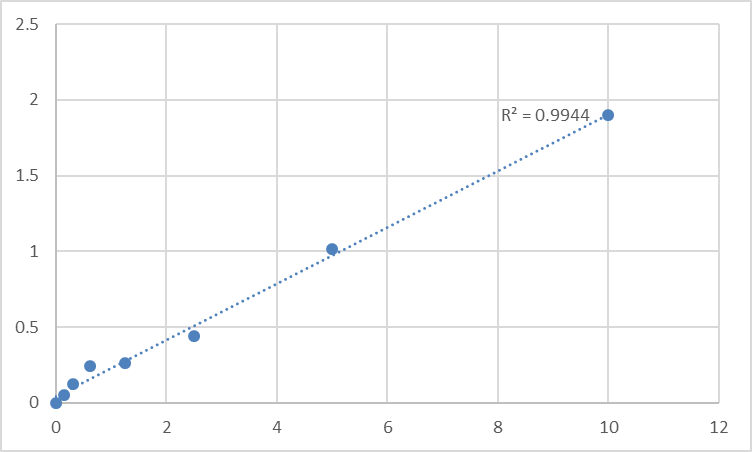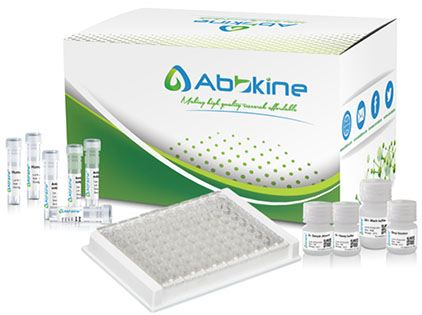| Product name | Human Sodium/hydrogen exchanger 1 (SLC9A1) ELISA Kit |
| Reactivity | Human |
| Applications | ELISA |
| Applications notes | This Human Sodium/hydrogen exchanger 1 (SLC9A1) ELISA Kit employs a two-site sandwich ELISA to quantitate SLC9A1 in samples. An antibody specific for SLC9A1 has been pre-coated onto a microplate. Standards and samples are pipetted into the wells and anySLC9A1 present is bound by the immobilized antibody. After removing any unbound substances, a biotin-conjugated antibody specific for SLC9A1 is added to the wells. After washing, Streptavidin conjugated Horseradish Peroxidase (HRP) is added to the wells. Following a wash to remove any unbound avidin-enzyme reagent, a substrate solution is added to the wells and color develops in proportion to the amount of SLC9A1 bound in the initial step. The color development is stopped and the intensity of the color is measured. |
| Detection method | Colorimetric |
| SampleType | Cell culture supernatants, Other biological fluids, Plasma, Serum |
| Assay type | Sandwich ELISA (quantitative) |
| Assay duration | Multiple steps standard sandwich ELISA assay with a working time of 3-5 hours. It depends on the experience of the operation person. |
| Alternative | SLC9A1; RP4-633N17.1; APNH; FLJ42224; NHE1; Na+/H+ antiporter; amiloride-sensitive; Na-Li countertransporter; sodium/hydrogen exchanger 1; solute carrier family 9 (sodium/hydrogen exchanger); isoform 1 (antipo |
| Kit components | • Human Sodium/hydrogen exchanger 1 microplate • Human Sodium/hydrogen exchanger 1 standard • Human Sodium/hydrogen exchanger 1 detect antibody • Streptavidin-HRP • Standard diluent • Assay buffer • HRP substrate • Stop solution • Wash buffer • Plate covers |
| Features & Benefits | Human Sodium/hydrogen exchanger 1 (SLC9A1) ELISA Kit has high sensitivity and excellent specificity for detection of Human SLC9A1. No significant cross-reactivity or interference between Human SLC9A1 and analogues was observed. |
| Calibration range | Please inquire |
| Limit of detection | Please inquire |
| Usage notes | • Do not mix components from different kit lots or use reagents beyond the kit expiration date. • Allow all reagents to warm to room temperature for at least 30 minutes before opening. • Pre-rinse the pipet tip with reagent, use fresh pipet tips for each sample, standard and reagent to avoid contamination. • Unused wells must be kept desiccated at 4 °C in the sealed bag provided. • Mix Thoroughly is very important for the result. It is recommended using low frequency oscillator or slight hand shaking every 10 minutes. • It is recommended that all samples and standards be assayed in duplicate or triplicate. |
| Storage instructions | The unopened kit should be stored at 2 - 8°C. After opening, please store refer to protocols. |
| Shipping | Gel pack with blue ice. |
| Precautions | The product listed herein is for research use only and is not intended for use in human or clinical diagnosis. Suggested applications of our products are not recommendations to use our products in violation of any patent or as a license. We cannot be responsible for patent infringements or other violations that may occur with the use of this product. |
| Background | The antiporter is a ubiquitous membrane-bound enzyme involved in volume- and pH-regulation of vertebrate cells. It is inhibited by the non-specific diuretic drug amiloride and activated by a variety of signals including growth factors, mitogens, neurotransmitters, tumor promoters, and others.The gene was first disrupted in mouse fibroblasts. The lost function was then restored by transfection with human genomic DNA. Clones containing these specific human sequences were isolated. One genomic fragment was identified as an exon-coding sequence from the sodium-hydrogen ion antiporter gene by demonstration that it could complement antiporter deficiency in mouse cells; that it recognized an mRNA in cells expressing antiport activity but not in deficient cells; and that it was amplified in variants overexpressing antiport activity. |
| Gene ID | 6548 |
| Alternative | SLC9A1; RP4-633N17.1; APNH; FLJ42224; NHE1; Na+/H+ antiporter; amiloride-sensitive; Na-Li countertransporter; sodium/hydrogen exchanger 1; solute carrier family 9 (sodium/hydrogen exchanger); isoform 1 (antipo |
| Accession | P19634 |

Fig.1. Human Sodium/hydrogen exchanger 1 (SLC9A1) Standard Curve.

Fig.2. Abbkine ELISA kit is series of sandwich ELISA to quantitate specific protein in samples.
You must be logged in to post a review.
Reviews
There are no reviews yet.